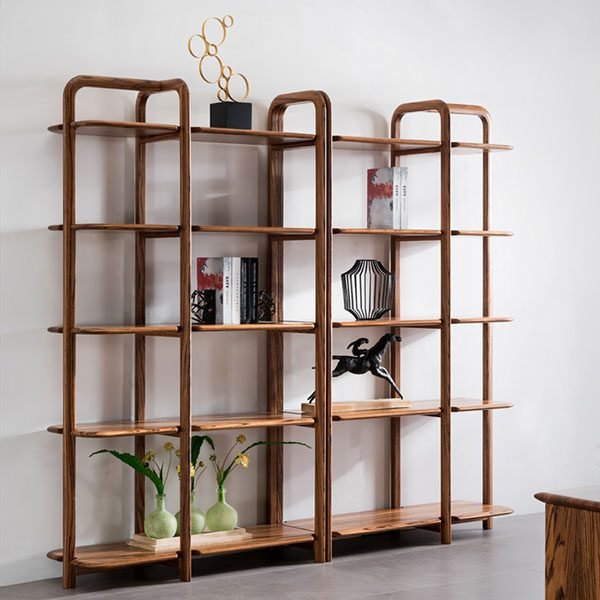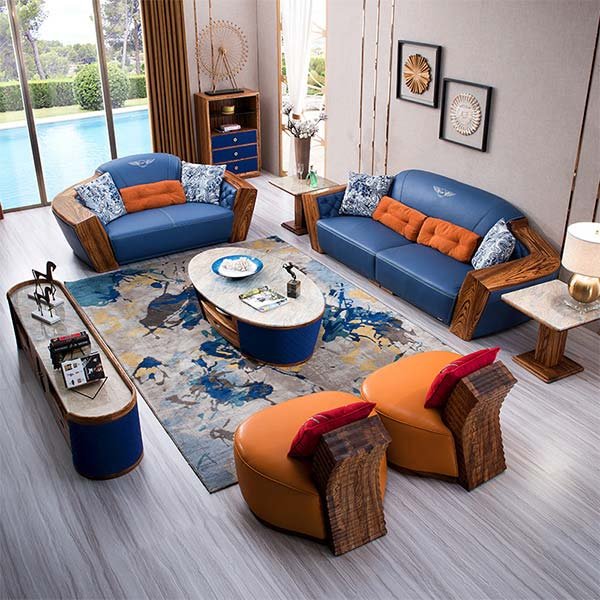“Maximize space, minimize clutter – create a cozy living room with smart furniture arrangement!”
Utilize multifunctional furniture
Arranging a small living room with furniture can be a challenging task, but with the right approach, you can make the most of the space you have. One effective strategy is to utilize multifunctional furniture.
Multifunctional furniture is designed to serve more than one purpose, making it ideal for small spaces where every square inch counts. For example, a sofa bed can provide seating during the day and transform into a bed for overnight guests. This can be a great space-saving solution for a small living room that doubles as a guest room.
Another option is a coffee table with storage compartments or ottomans that can be used for seating and also have hidden storage inside. These pieces can help keep clutter at bay and maximize the functionality of your living room.
When selecting multifunctional furniture, consider the scale and proportion of the pieces to ensure they fit well in your space. Look for furniture that is sleek and compact to avoid overwhelming the room. Additionally, choose pieces that complement the style and color scheme of your living room to create a cohesive look.
In addition to multifunctional furniture, consider the layout of your living room to make the most of the space. One effective layout for a small living room is to place the furniture against the walls to create an open and airy feel. This can help maximize the floor space and make the room appear larger than it actually is.
Another layout option is to create zones within the room for different activities, such as a seating area, a reading nook, or a workspace. This can help define the purpose of each area and make the room feel more organized and functional.
When arranging furniture in a small living room, be mindful of traffic flow and ensure there is enough space to move around comfortably. Avoid blocking doorways or windows, as this can make the room feel cramped and claustrophobic.
To create a sense of balance and harmony in your small living room, consider the placement of accessories and decor. Use mirrors to reflect light and create the illusion of more space. Choose a few statement pieces, such as a bold rug or a piece of artwork, to add personality and interest to the room.
Overall, arranging a small living room with furniture requires careful planning and consideration of the space available. By utilizing multifunctional furniture, creating functional layouts, and paying attention to details, you can create a stylish and comfortable living room that makes the most of your space.
Create a focal point
Arranging furniture in a small living room can be a challenging task, but with the right approach, you can make the most of the space you have. One key aspect to consider when arranging furniture in a small living room is creating a focal point.
A focal point is a central element in the room that draws the eye and anchors the space. This could be a fireplace, a piece of artwork, or a statement piece of furniture. By creating a focal point, you can give the room a sense of purpose and direction.
When choosing a focal point for your small living room, consider the size and scale of the room. If you have a small space, opt for a focal point that is not too overpowering. A piece of artwork or a small fireplace can work well in a small living room, while a large piece of furniture may make the room feel cramped.
Once you have chosen a focal point, arrange your furniture around it. Place your largest piece of furniture, such as a sofa or a sectional, facing the focal point. This will help to create a sense of balance and harmony in the room.
Next, consider the flow of the room. Make sure there is enough space between furniture pieces to allow for easy movement around the room. Avoid placing furniture too close together, as this can make the room feel cluttered and cramped.
When arranging furniture in a small living room, it is important to consider the scale of the furniture. Opt for smaller, more streamlined pieces that won’t overwhelm the space. Consider using multi-functional furniture, such as a coffee table with storage or a sofa bed, to maximize space and functionality.
In addition to creating a focal point and arranging furniture for flow and scale, consider the use of color and lighting in your small living room. Light colors can help to make a small space feel larger and more open, while strategic lighting can help to create a cozy and inviting atmosphere.
In conclusion, arranging furniture in a small living room requires careful consideration of the focal point, flow, scale, color, and lighting. By following these tips, you can create a functional and stylish living room that makes the most of your space.
Use light colors and mirrors to create the illusion of space
Arranging a small living room with furniture can be a challenging task, but with the right techniques, you can make the most of the space you have. One effective way to create the illusion of space in a small living room is to use light colors and mirrors.
Light colors, such as white, cream, or pastel shades, can make a room feel larger and more open. By painting the walls and ceiling in light colors, you can create a sense of airiness and brightness that will make the room appear more spacious. Additionally, using light-colored furniture and accessories can help to further enhance this effect.
Mirrors are another great tool for making a small living room feel larger. Placing a large mirror on one wall can reflect light and create the illusion of depth, making the room seem bigger than it actually is. You can also use smaller mirrors strategically placed around the room to bounce light around and create a sense of openness.
In addition to using light colors and mirrors, it’s important to choose the right furniture for a small living room. Opt for pieces that are scaled to the size of the room, such as a small sofa or armchair instead of a large sectional. Consider furniture with legs, as this can create a sense of space by allowing light to pass underneath.
When arranging furniture in a small living room, it’s important to think about traffic flow and functionality. Avoid blocking doorways or pathways, and leave enough space between pieces of furniture for easy movement. Consider using multifunctional furniture, such as a coffee table with storage or a sofa bed, to maximize space and functionality.
Another tip for arranging furniture in a small living room is to create zones for different activities. For example, you could have a seating area for watching TV, a reading nook with a comfortable chair and lamp, and a small dining area. By defining these zones with furniture placement, you can make the room feel more organized and purposeful.
In conclusion, arranging a small living room with furniture requires careful planning and consideration. By using light colors and mirrors to create the illusion of space, choosing the right furniture, and creating functional zones, you can make the most of your small living room and create a comfortable and inviting space for you and your guests.
Заключение
Arrange furniture in a small living room by keeping the layout open and maximizing space with multi-functional pieces like a sofa bed or ottoman with storage. Use light colors and mirrors to create the illusion of a larger space. Consider using floating shelves or wall-mounted furniture to free up floor space. Don’t overcrowd the room with too much furniture, and make sure to leave pathways clear for easy movement.



